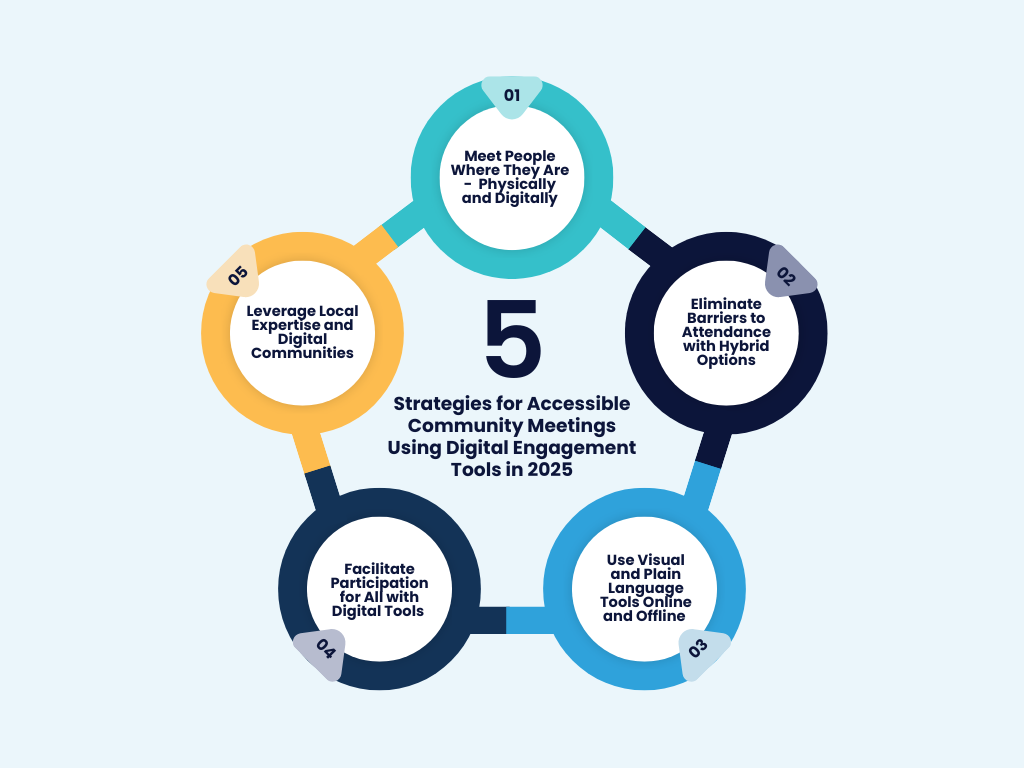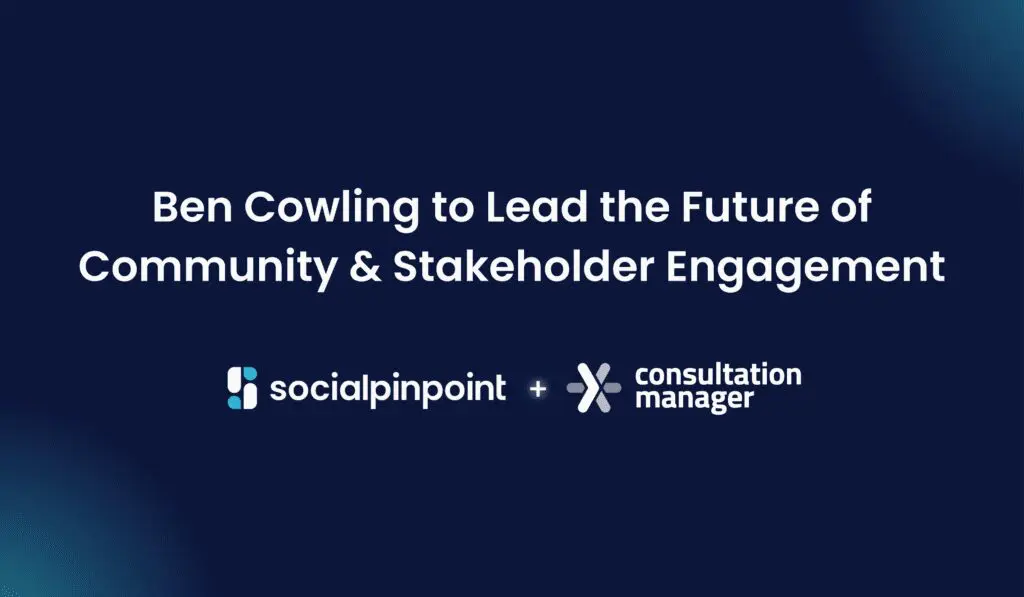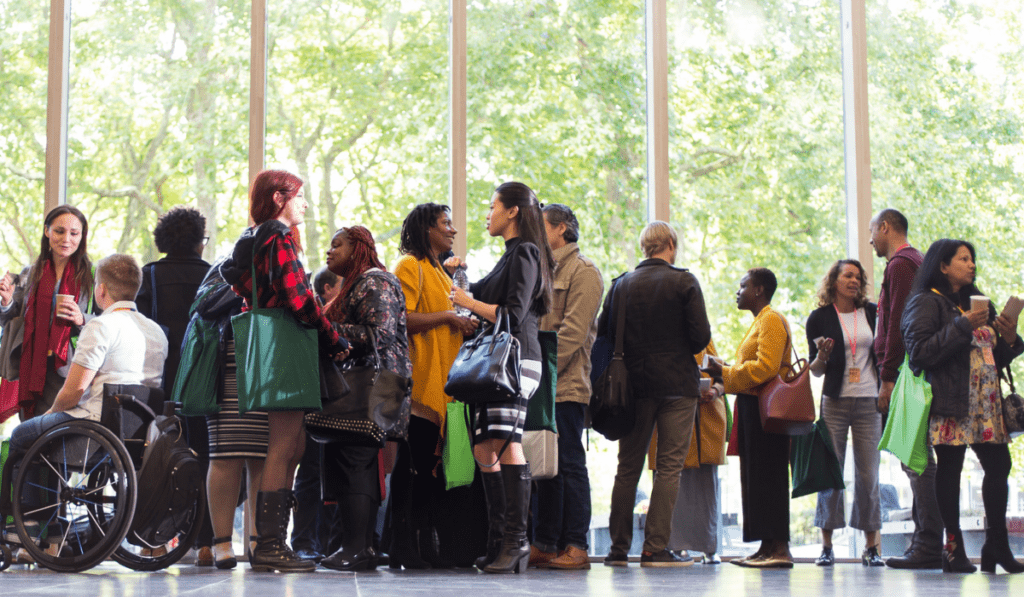In 2015, I was inspired by the conversations happening at the ELGL (Engaging Local Government Leaders) Annual Conference, specifically the discussions around making local government more accessible. Though I couldn’t attend in person, I followed the event closely on Twitter – a space that, at the time, felt like a safe haven for open, thoughtful dialogue. One particular moment stood out: a panel of young, innovative government officials tackling the barriers that often make council meetings difficult for many citizens to access. Their ideas were both practical and refreshing, sparking a lot of reflection of my own experiences with community engagement.
Fast forward to 2025, and the need to make meetings more accessible is as critical as ever. While the core principles of accessibility and inclusion remain unchanged, digital tools have revolutionised how we connect with our communities. Platforms like Social Pinpoint now provide unprecedented opportunities to break down barriers, engage broader audiences, and create more inclusive experiences for all.
In this article, I’ll explore five updated strategies for ensuring your community meetings are accessible in 2025, with a focus on leveraging digital engagement tools.
Five Strategies for Accessible Community Meetings Using Digital Engagement Tools in 2025

Discover five effective strategies for hosting accessible community meetings by leveraging digital engagement tools to foster inclusivity and public participation in 2025.
- Meet People Where They Are —Physically and Digitally
- Eliminate Barriers to Attendance with Hybrid Options
- Use Visual and Plain Language Tools Online and Offline
- Facilitate Participation for All with Digital Tools
- Leverage Local Expertise and Digital Communities
1. Meet People Where They Are —Physically and Digitally
Rather than expecting the community to come to you, bring the meeting to them—both in person and online. When I wrote these points 10 years ago, I suggested holding in-person meetings in accessible venues such as libraries, cafes, or parks. It was important to ensure these venues were accessible for everyone, including those with mobility challenges.
Now, with the rise of digital engagement, platforms like Social Pinpoint allow you to host virtual town halls, interactive forums, and surveys that meet people where they already spend their time: online. By combining physical and digital spaces, you can capture insights from a much wider audience at any time and from anywhere. This hybrid approach ensures greater inclusivity, allowing for both in-person and online participation.
2. Eliminate Barriers to Attendance with Hybrid Options
Make it as easy as possible for people to engage by offering multiple participation options. Digital engagement tools can help you achieve this in several ways:
- Provide virtual access: Stream meetings live or record them for on-demand viewing. Platforms like Social Pinpoint can host these recordings, allowing participants to watch at their convenience and provide ongoing feedback.
- Share resources: Upload documents, presentations, and videos to an accessible online hub where participants can review materials before and after the meeting. This ensures that everyone has access to the same information, no matter their participation method.
- Enable real-time interaction: Use tools like Quick Poll, Question & Answer, and live comment features to encourage active participation. These tools ensure that everyone, regardless of their location, can have their voice heard and engage in meaningful dialogue.
- Support physical attendance: For those attending in person, ensure support for specific needs such as childcare, transportation, and venue accessibility. Addressing these factors helps remove common barriers to physical attendance and fosters a more inclusive environment.
3. Use Visual and Plain Language Tools Online and Offline
Inclusivity begins with clear and accessible communication. Digital platforms can enhance this in several ways:
- Colour-coded documents: Use colour to make resources more visually distinct and easier to navigate. On Social Pinpoint, you can organise materials into sets in the Document Library for easy access. For printed documents, consider using a different colour on the front page to make it easy to locate during in-person discussions.
- Plain language: Avoid jargon in both digital and physical documents. Opt for clear, concise language that is easy to understand. Ensure text is legible by using a font size of at least 12 points, making materials accessible to a wider audience.
- Interactive formats: Engage a diverse range of learning styles by offering videos, infographics, and interactive maps. Platforms like Social Pinpoint can bring static images to life with tools like Hotspot, allowing for a more dynamic experience.
- Accessible formats: Ensure materials are available in multiple formats to cater to different needs. This includes providing resources in large print, audio files, and screen-reader-compatible formats. Sharing videos on YouTube via Social Pinpoint is an easy way to make multimedia content accessible to all.
4. Facilitate Participation for All with Digital Tools
Creating an environment where everyone feels comfortable speaking up is key, whether in person or online. Digital platforms offer powerful tools to make participation easier and more inclusive:
- Remove shyness: Allow participants to submit questions or feedback anonymously if they feel hesitant to speak up in public. This can help create a more comfortable space for those who might otherwise stay silent.
- Interactive features: Use tools like Social Pinpoint’s Social Map or Conversation to gather input in a non-intimidating, fun, and interactive way. These tools foster engagement without the pressure of speaking in front of others.
- Red card/green card system: Replicate the offline concept of flags and signals by allowing users to give feedback on comments or questions digitally. Tools like thumbs up or down can help indicate which comments need clarification or which questions need to be addressed. Facilitators can then respond in real-time or during follow-up sessions, ensuring concerns are properly addressed.
5. Leverage Local Expertise and Digital Communities
Tap into both physical and digital networks to enrich your community engagement. Digital tools can help you leverage local knowledge and gather diverse perspectives:
- Identify local experts: Engage community leaders through online platforms or forums by giving them a role or creating private spaces where they can share their insights.
- Crowdsource ideas: Encourage participants to suggest meeting locations or topics using Social Pinpoint’s Gather or Visioner tools. These tools allow the community to drive the conversation and contribute to decision-making.
- Translate resources: Work with local community groups to create multilingual content, ensuring your message reaches a broader and more diverse audience. Platforms like Social Pinpoint can host translated materials for easy access, or, with the Translation block (available as a paid for add-on), you can directly send content to communities in their preferred language.
For example, I once worked with local groups to translate a DVD into seven languages, for the cost of a single professional translation. Not only did they handle the translations, but they also shared the content within their own networks. With tools like Social Pinpoint, you can digitise these efforts, making them more efficient and widely accessible to diverse groups.
Why Digital Accessibility Matters
Accessible meetings go beyond logistical exercises—they are fundamental to building trust and accountability with your community. By integrating digital tools with inclusive practices, you create opportunities for broader participation, foster genuine engagement, and ensure that every voice is heard.
In 2025, let’s commit to embracing innovative and inclusive approaches that make our meetings—whether in person or online—a space where everyone feels welcome. The effort to make meetings more accessible is not just worthwhile; it’s essential for creating a more connected, engaged, and empowered community.












